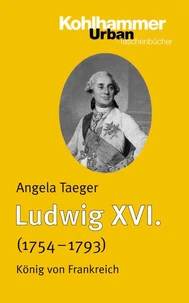Die Guillotine und die Erfindung der Humanität
Par :Formats :
Disponible dans votre compte client Decitre ou Furet du Nord dès validation de votre commande. Le format ePub est :
- Compatible avec une lecture sur My Vivlio (smartphone, tablette, ordinateur)
- Compatible avec une lecture sur liseuses Vivlio
- Pour les liseuses autres que Vivlio, vous devez utiliser le logiciel Adobe Digital Edition. Non compatible avec la lecture sur les liseuses Kindle, Remarkable et Sony
 , qui est-ce ?
, qui est-ce ?Notre partenaire de plateforme de lecture numérique où vous retrouverez l'ensemble de vos ebooks gratuitement
Pour en savoir plus sur nos ebooks, consultez notre aide en ligne ici
- Nombre de pages143
- FormatePub
- ISBN978-3-17-029280-2
- EAN9783170292802
- Date de parution28/09/2016
- Protection num.Digital Watermarking
- Taille4 Mo
- Infos supplémentairesepub
- ÉditeurKohlhammer
Résumé
In 1791, the decision was taken in France to keep the death penalty in force & but there was a demand for it to be made more humane. From 1792 onwards, the guillotine provided an apparatus that was intended to satisfy this requirement. The guillotine was used for the last time only as late as 1977. What led Joseph-Ignace Guillotin in 1789 to make a name for himself as an expert on the issue of state-ordained humane killing? What was the importance of the guillotine as a prop on the stage of political conflicts and power disputes from 1791 until the abolition of the death penalty in France in 1981? And what role did the public play in the debate over the death penalty and how it was to be carried out? This book provides answers and presents a panorama of the cultural history of the death penalty in France.
In 1791, the decision was taken in France to keep the death penalty in force & but there was a demand for it to be made more humane. From 1792 onwards, the guillotine provided an apparatus that was intended to satisfy this requirement. The guillotine was used for the last time only as late as 1977. What led Joseph-Ignace Guillotin in 1789 to make a name for himself as an expert on the issue of state-ordained humane killing? What was the importance of the guillotine as a prop on the stage of political conflicts and power disputes from 1791 until the abolition of the death penalty in France in 1981? And what role did the public play in the debate over the death penalty and how it was to be carried out? This book provides answers and presents a panorama of the cultural history of the death penalty in France.



